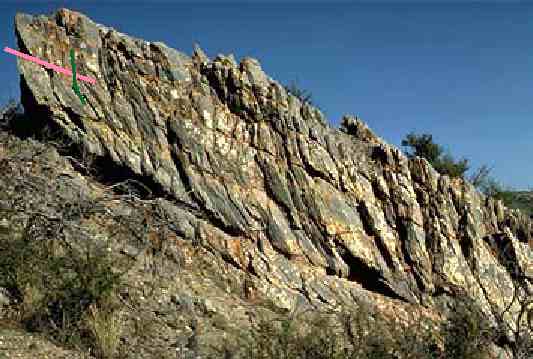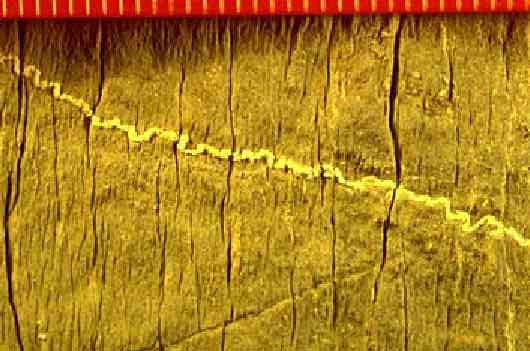
Axial Planar Cleavage in Devonian Old Red Sandstone. SW Wales, UK.
Note the cleavage in the foreground parallel to the axial surface of the syncline.
Click here to see a close-up view of the anticline.
Axial Planar Cleavage. Cleavage is a type of foliation--but a specific type whereby the rock tends to split parallel to the cleavage surfaces. Axial Planar Cleavage forms approximately parallel to axial surfaces of folds. Most cleavages form by the process of pressure solution (dissolution creep) in a direction that is perpendicular to maximum shortening.

Axial Planar Cleavage in Devonian Old Red Sandstone. SW Wales, UK.
Note the cleavage in the foreground parallel to the axial surface of the
syncline.
Click here to see a close-up view of the
anticline.
------

Cleavage in Mississippian Limestone (Lodgepole Fm.), SW Montana.
Bedding is parallel to the pink line; cleavage is parallel to the green
line.
As the cleavage dips more steeply than the bedding, these beds should be
right-side up --as they are.
------

Cleavage and recumbently folded sandstone and siltstone, SW Nevada.
Here, the cleavage formed preferentially in the siltstone. It is subhorizontal,
approximately parallel to the axial surface. Click here
for a close-up
view of the area near the rock hammer.
-----

Cleavage (vertical) and shortened calcite vein in limestone. Scale in mm.
To drive home the fact that cleavage forms by pressure solution,
perpendicular to the direction of maximum shortening, notice how
the calcite vein has been shortened!
Return to foliations.